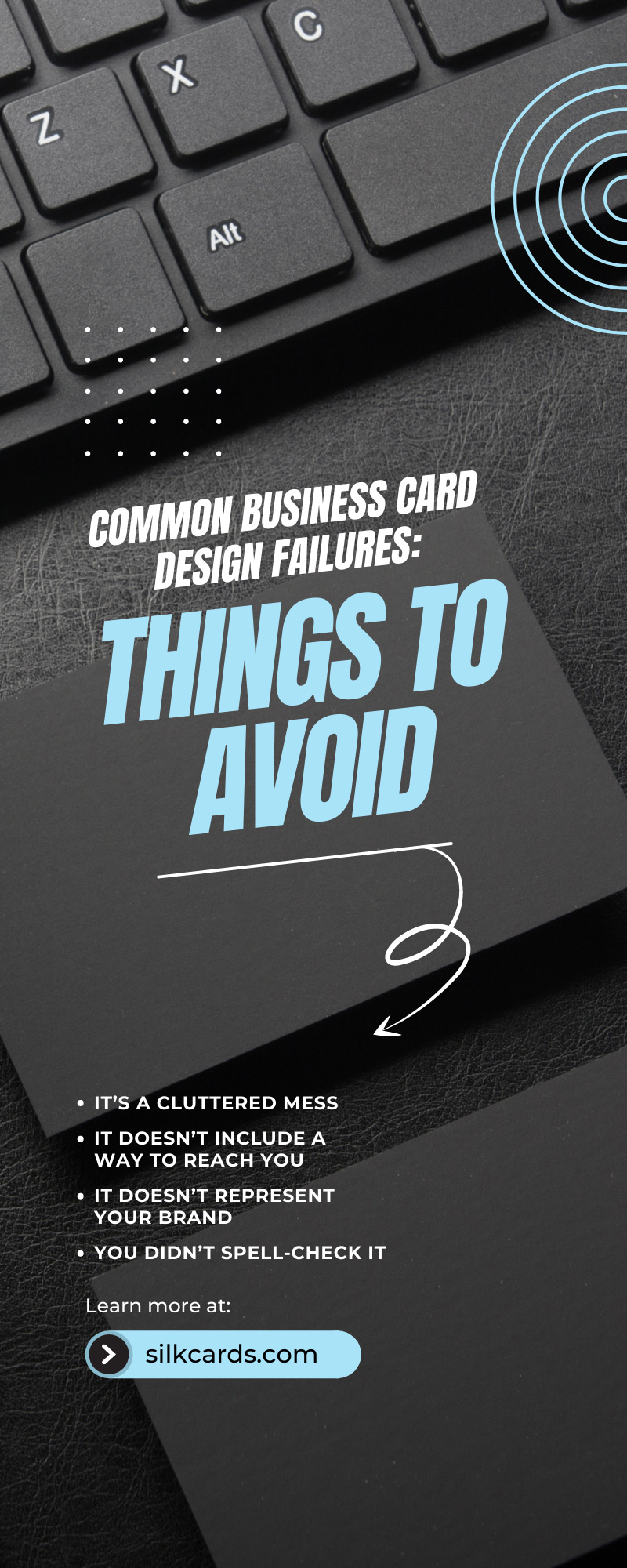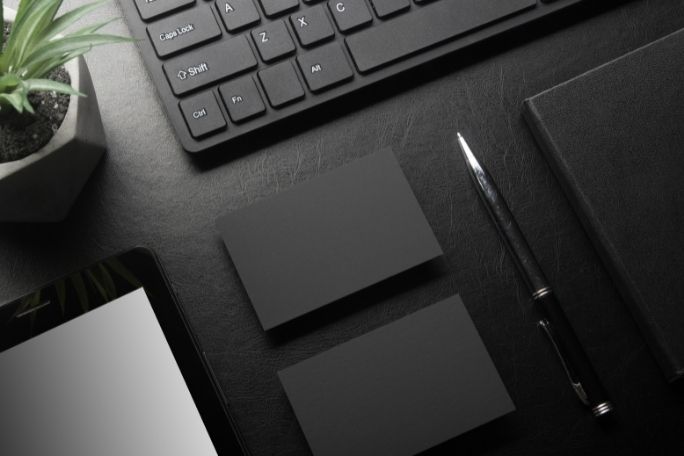Business cards are essential, whether your business has been around for decades or you’re just starting your first business journey. Before going through the effort of creating the card that will tell the world who you are and what you have to offer, you should understand the most common business card design failures so that you won’t make those same mistakes. In this article, we’ll look at what those mistakes are and how to avoid them.
It’s Not Just a Card
That small card you hand to people in hopes they’ll contact you is a powerful tool. A business card is a portable advertisement you can bring with you anywhere and everywhere. You get one shot to impress with it, so you’ve got to make it count.
It’s amazing how much information a well-designed business card holds. There’s an art to including all the necessary information without overloading the card. For this reason, it’s best to choose an experienced designer to help you create your business card. Let’s get started on our list of the most common business card design failures, starting with cluttered cards.
It’s a Cluttered Mess
Clutter is never good anywhere, including your business card. The goal is to give a quick summary of the services you offer without jamming so much onto the card that potential customers need a magnifying glass to read it all. The more words you use, the tinier they get.
Practice the layout and writing over and over until the design is neat, clear, and easy to read while also showing your personality. Say what you need to say in as few words as possible.
It Doesn’t Include a Way To Reach You
Believe it or not, businesspeople often get so caught up in how a card looks that they forget to add all their contact information. Today, we have quite a few ways for customers to reach us. Include it all. You never know what someone’s preferred method of contact is, so let them decide. Here’s a list of important contact information you don’t want to leave off your business card:
- Social media pages
- Phone number (texting and calling)
- Email address
- Street address, if applicable
- Mailing address
- Website address
When you include all your information, you’ll feel confident no one can say they weren’t sure how to contact you.
It’s Behind the Times
Don’t carry around an outdated business card. Classic is one thing; outdated is another. Outdated means two things: the style is from another era, or your information isn’t up to date.
- The style: Everyone has different tastes, but if yours is quite old-fashioned and doesn’t suit your current business, you’ll need to leave your comfort zone and design a business card with a modern twist. Not every business card requires something trendy and hip, but you don’t want the design to look outdated.
- The Information: Whether you’re updating an old card or designing a new one, double-check, then triple-check, the information to make sure it’s all up to date before printing.
It Doesn’t Represent Your Brand
The brand represents your business. Create your brand before designing your cards, and then allow it to shine through in the design. A lack of branding leaves customers wondering what the business represents.
Your business’s brand encompasses your colors, lettering, logo, and slogan. It creates the vibe of the company. What vibe are you hoping others pick up from your business card? Consider the emotions, thoughts, and feelings you want to inspire, and your brand will come to you.
It Includes Blurry or Pixeled Images
Image quality is important, and one of the most common business card design failures is not checking the quality of images before ordering.
Unclear images make a business card look sloppy and cheap. That won’t say anything good about your business.
You Didn’t Spell-Check It
Typos are unacceptable on a business card. The best way to avoid this mistake is to proofread it several times and ask others to proofread it as well. It’s better to fix typos right away rather than to see them after you’ve already started handing the business cards out to others.
You Ignored the Safe Area
When designing a business card, there’s a safe area to work with, and you can’t ignore it. The safe area allows a designer to work within the areas that won’t be cut when printing. Don’t think you can just squeeze in a little extra text or embellishment here and there. Safe areas are there for a reason—to make designing simpler.
You Waste Valuable Space
The front of your business card would be perfect, if only you could have said a little more. Well, you could if you use the back of the card as well. It’s a mistake to leave all that blank space on the back of a card. It’s there, so you might as well use it. No one grabs a business card and doesn’t flip it over to see what’s there. We all do, so use it as an opportunity to add a little more.
The Cardstock, Size, and Shape Choices Don’t Fit
You have plenty of great options when it comes to your business cards’ material, shape, and size. Traditional is great, but you can get more creative if it suits the business. If you are a serious law firm, don’t choose a circular card because you think it looks fun.
Of course, the opposite is also true. If you own a trendy company that’s all about forward thinking and good times, go for a round card, a plastic card, or even a metal card to leave your mark. Choose cardstock, size, and shape according to your brand.
It Doesn’t Show Your Value
You know your business adds value to others, but does your business card let them know that? Somewhere on the card, let customers know why they need you and how you can improve their lives.
Take the time to create the best business card the first time so that you have no regrets as you hand them to others. Use our guide to help you avoid the mistakes others have made.
Silk Cards is here to help you design the business card you envision. We offer unique options, such as laser-cut metal business cards, as well as many other trendy, elegant, or traditional designs. Contact us or browse our online store to see our many options.


